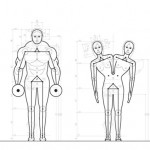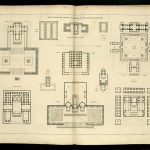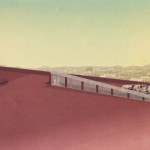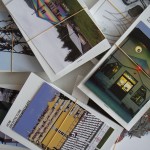Franciscan friar and mathematician Luca Pacioli wrote several books on mathematics and geometry. Among them, in 1497, Pacioli conceived De Divina Proportione, a treatise in vulgar on mathematical proportions applied to geometry and art with a specific focus on architecture and the human figure. The work was finally published in 1509 featuring illustrations by Leonardo da Vinci. Among other topics, De Divina Proportione also deals with the understanding of the composition of the letters of the alphabet with precise xylographic printings depicting their geometric constructions. Pacioli’s aim for harmony in proportional relationships pushed him to apply mathematical rules and geometry to capital letters. All the letters are exclusively composed through straight lines and curves. They’re based on the 1:9 proportion, a system related to a human body whose height corresponds to 9 times the size of the head.

Pacioli dedicates 24 plates to the subject, the first one representing the side profile of the man’s head, while the others 23 including the letters from A to Y, including K, X and two different designs for O; U is replaced by V, and Z is missing probably because the author considered this letter a Greek character. The letters are all in bold format and they measure 9.5 cm. Plates are carved in wood. Each letter is accompanied by a short caption.







Further reading (in italian):
Le Geometrie ricostruite delle lettere capitali di Luca Pacioli





Leave a Reply